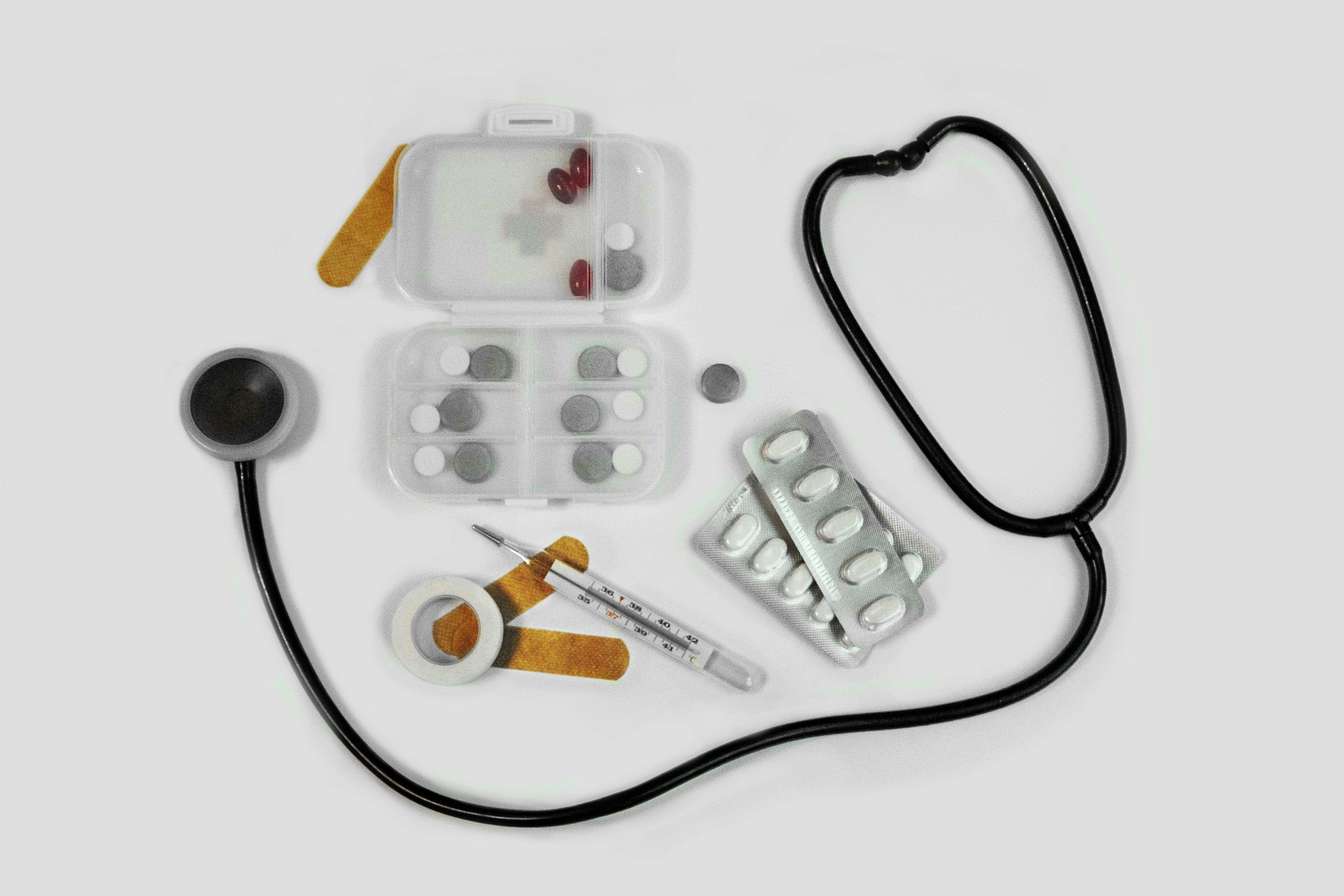Pink eye, or conjunctivitis, is a common and often highly contagious eye condition that affects millions of people every year. While this condition is usually not serious, it can cause discomfort, irritation, and inconvenience, especially for busy individuals who cannot afford to take time off work or other responsibilities.
This article explores everything you need to know about conjunctivitis (pink eye), from its causes and symptoms to treatment options and prevention strategies.
Pink Eye: The Basics
Pink eye is an inflammation of the conjunctiva, the thin membrane that covers the white part of the eye and the inner eyelid. This inflammation causes the blood vessels in the conjunctiva to become more prominent, leading to the eye appearing red or pink.
There are several types of pink eye, each with different causes and characteristics:¹
- Viral Conjunctivitis: Caused by viruses like the common cold, this type often spreads through coughing or sneezing.
- Bacterial Conjunctivitis: Resulting from bacterial infections, this type produces a thick, yellow or greenish discharge and may require antibiotic treatment.
- Allergic Conjunctivitis: Triggered by allergens like pollen, pet dander, or dust, this type can cause significant irritation.
- Irritant-Induced Conjunctivitis: Caused by exposure to smoke, chemicals, or chlorine in pools, this form typically resolves once the irritant is removed.
Who Is at Risk?
While anyone can develop conjunctivitis, some groups are more susceptible, including:²
- Children and daycare attendees: Viral and bacterial conjunctivitis spreads easily among young children due to close contact and poor hygiene habits.
- Healthcare workers: Frequent exposure to patients with infections increases the risk.
- Contact lens wearers: Poor lens hygiene or extended wear can introduce bacteria and irritants to the eyes.
- Individuals with allergies: Those who suffer from seasonal allergies or are exposed to allergens like pet dander or dust may experience allergic conjunctivitis.
- People with weakened immune systems: Those with compromised immunity due to conditions like diabetes or autoimmune diseases are more prone to bacterial and viral infections.
What Are the Signs and Symptoms of Pink Eye?

Common symptoms of conjunctivitis include:²
- Redness in one or both eyes
- Itchy, irritated, or burning eyes
- Watery discharge or excessive tearing
- Thick, yellow, or greenish discharge that can crust over the eyelashes, especially after sleeping
- Swelling of the eyelids
- Sensitivity to light (photophobia)
- A gritty sensation, as if something is in the eye
While these symptoms are usually mild, severe cases may require medical attention to prevent complications.
How to Distinguish Between Viral and Bacterial Pink Eye
- Viral Conjunctivitis: Usually starts in one eye and can spread to the other. It is often accompanied by watery discharge, itchiness, and sensitivity to light. Viral pink eye is commonly associated with cold or flu-like symptoms.
- Bacterial Conjunctivitis: Produces thick, yellow or green discharge that can cause the eyelids to stick together, especially after sleeping. It often affects both eyes and may lead to more severe redness and swelling.
What Causes Pink Eye?
Pink eye can be caused by infections, allergens, or environmental irritants. The most common causes are:¹
- Viral infections: Caused by adenoviruses and other common viruses, viral conjunctivitis is highly contagious.
- Bacterial infections: Bacterial pink eye results from bacteria such as Staphylococcus aureus or Streptococcus pneumoniae. It is also contagious.
- Sexually transmitted infections (STIs): Certain bacterial STIs, such as Chlamydia trachomatis and Neisseria gonorrhoeae, can cause conjunctivitis. Gonococcal conjunctivitis, caused by gonorrhea, can lead to severe eye discharge and complications if untreated. Chlamydial conjunctivitis is another STI-related form that can occur in newborns (via birth canal transmission) and adults through direct contact with infected fluids.
- Allergies: Allergic conjunctivitis occurs when the eyes react to allergens like pollen, pet dander, mold, or dust mites. Allergic conjunctivitis is not contagious.
- Irritants: Exposure to smoke, chlorine, pollution, or chemical fumes can cause non-infectious conjunctivitis.
- Contact lenses: Wearing dirty or improperly fitted contact lenses can lead to pink eye.
How Is Pink Eye Treated?

The treatment for this condition depends on its cause:
- Viral conjunctivitis: No specific medication is required as it usually clears up on its own within 7 to 14 days. Using artificial tears and applying cold compresses can relieve symptoms.
- Bacterial conjunctivitis: Antibiotic eye drops can shorten the infection’s duration and reduce symptoms.
- STI-induced conjunctivitis: If pink eye is caused by an STI such as gonorrhea or chlamydia, prescription antibiotics (oral or eye drops) are necessary. This type of pink eye requires prompt medical attention to prevent complications.
- Allergic conjunctivitis: Antihistamines, allergy eye drops, and avoiding allergens can help manage symptoms.
- Irritant-induced conjunctivitis: Flushing the eyes with water and avoiding the irritant usually resolves symptoms quickly.
How Can Pink Eye Be Prevented?
Since conjunctivitis is highly contagious, good hygiene and preventive measures can reduce the risk of spreading or contracting the infection. Key strategies for preventing pink eye include:
- Washing hands often.
- Avoiding touching the eyes.
- Not sharing personal items like towels, eye makeup, or contact lenses.
- Cleaning and disinfecting surfaces regularly, especially in shared spaces.
- Following proper contact lens hygiene.
- Staying home from work or school if diagnosed with contagious pink eye to prevent its spread.
FAQs
What gets rid of pink eye quickly?
While viral pink eye must run its course, relief can be achieved through cold compresses, artificial tears, and avoiding irritants.
Bacterial pink eye improves faster with prescription antibiotic eye drops, which typically clear up symptoms within 24 to 48 hours of use.
STI-related pink eye requires prescription oral or topical antibiotics and should be treated promptly to avoid complications.
How long is pink eye contagious?
The contagious period depends on the cause:
Viral: Contagious as long as symptoms persist, usually around 7 to 14 days.
Bacterial: Contagious until 24 hours after starting antibiotic treatment.
STI-related: Can remain contagious until proper antibiotic treatment is completed.
Allergic: Not contagious.
How long does it take for pink eye to go away?
Viral pink eye: Usually resolves within 1 to 2 weeks without treatment.
Bacterial pink eye: Improves within a few days of antibiotic treatment.
STI-related pink eye: Can take longer to clear, depending on the severity and treatment response.
Allergic pink eye: Can persist as long as exposure to allergens continues, but antihistamines and eye drops can provide relief.
What happens if you don’t treat pink eye?
Most cases of viral and allergic conjunctivitis clear up on their own. However, untreated bacterial pink eye can lead to complications such as:
Increased eye discomfort and prolonged symptoms.
Corneal inflammation (keratitis), which can affect vision.
Spreading the infection to others. If symptoms worsen or do not improve within a few days, seek medical attention.
If you suspect you have pink eye, 24hrdoc offers quick and easy virtual consultations to get the care you need without disrupting your schedule.
Pink Eye Treatment Online with 24hrdoc
For busy individuals who need fast and effective online treatment for pink eye, 24hrdoc provides convenient medical consultations for this condition. With 24/7 access to licensed healthcare professionals, you can receive a diagnosis and prescription for pink eye without having to visit a clinic.
Simply complete an online consultation, and if necessary, a prescription for antibiotic eye drops or other medications can be sent to your nearest pharmacy.
Sources
- American Optometric Association. Conjunctivitis (pink eye).
- National Eye Institute. Pink Eye.




